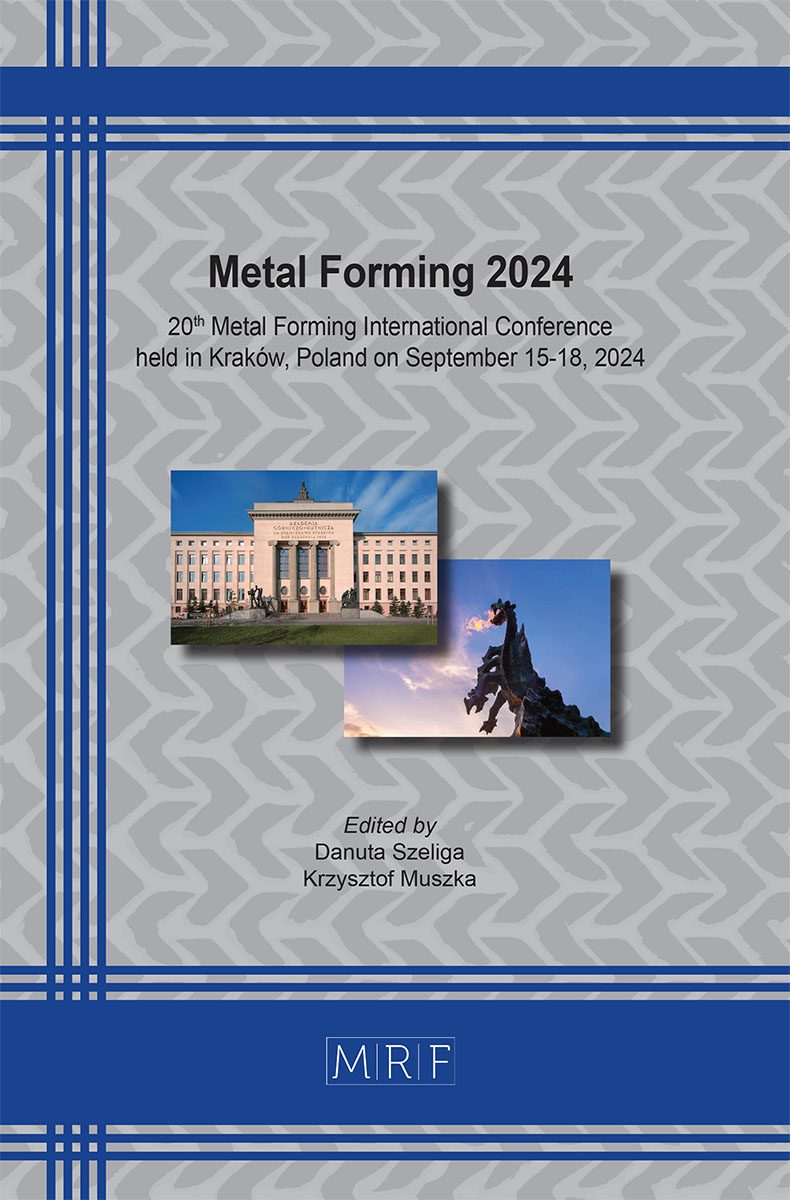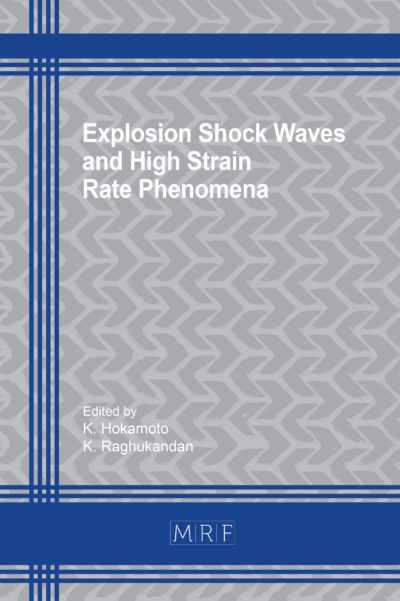–
Residual stress and part distortion prediction in L-PBF of Ti-6Al-4V using layer-by-layer FEM simulation
POLLARA Gaetano, PALMERI Dina, BUFFA Gianluca, FRATINI Livan
download PDFAbstract. Due to its ability to accommodate customer demands and produce objects with complex shapes, Laser Powder Bed Fusion (LPBF) has been widely adopted in numerous industry areas, including biomedical, automotive, and aerospace. Even with all the benefits that LPBF has to offer, its use may be limited by the development of residual stress according to the strong thermal gradients produced throughout the process. Residual stresses within the samples can result in part distortion after the removal from the built platform or even in part failure during the process if the residual stresses are excessive. In order to save time and costs, numerical simulation can be an effective tool to predict residual stress and part distortion in opposition to the trial-and-error approach which involves an expansive and time-consuming experimental campaign. To this aim a finite element method (FEM) together with a layer-by-layer approach was used in this study. Numerical simulations were performed on the commercial software DEFORM-3D™ with which different values of laser power were investigated. Moreover, the influence of the voxel mesh on the FEM model accuracy was also investigated.
Keywords
Numerical Simulation, Laser Powder Bed Fusion, Ti-6Al-4V
Published online 9/15/2024, 7 pages
Copyright © 2024 by the author(s)
Published under license by Materials Research Forum LLC., Millersville PA, USA
Citation: POLLARA Gaetano, PALMERI Dina, BUFFA Gianluca, FRATINI Livan, Residual stress and part distortion prediction in L-PBF of Ti-6Al-4V using layer-by-layer FEM simulation, Materials Research Proceedings, Vol. 44, pp 475-481, 2024
DOI: https://doi.org/10.21741/9781644903254-51
The article was published as article 51 of the book Metal Forming 2024
![]() Content from this work may be used under the terms of the Creative Commons Attribution 3.0 license. Any further distribution of this work must maintain attribution to the author(s) and the title of the work, journal citation and DOI.
Content from this work may be used under the terms of the Creative Commons Attribution 3.0 license. Any further distribution of this work must maintain attribution to the author(s) and the title of the work, journal citation and DOI.
References
[1] T. DebRoy, H.L. Wei, J.S. Zuback, T. Mukherjee, J.W. Elmer, J.O. Milewski, A.M. Beese, A. Wilson-Heid, A. De, W. Zhang, Additive manufacturing of metallic components – Process, structure and properties, Prog. Mater. Sci. 92 (2018) 112–224. https://doi.org/10.1016/j.pmatsci.2017.10.001
[2] G. Buffa, D. Palmeri, G. Pollara, F. Di Franco, M. Santamaria, L. Fratini, Process parameters and surface treatment effects on the mechanical and corrosion resistance properties of Ti6Al4V components produced by laser powder bed fusion, Progress in Additive Manufacturing (2023). https://doi.org/10.1007/s40964-023-00440-9
[3] S. Liu, Y.C. Shin, Additive manufacturing of Ti6Al4V alloy: A review, Mater. Des. 164 (2019) 8–12. https://doi.org/10.1016/j.matdes.2018.107552
[4] X. Lu, M. Chiumenti, M. Cervera, M. Slimani, I. Gonzalez, Recoater-Induced Distortions and Build Failures in Selective Laser Melting of Thin-Walled Ti6Al4V Parts, J. Manuf. Mater. Process. 7 (2023). https://doi.org/10.3390/jmmp7020064
[5] G. Buffa, A. Costa, D. Palmeri, G. Pollara, A. Barcellona, L. Fratini, A new control parameter to predict micro-warping-induced job failure in LPBF of TI6AL4V titanium alloy, Int. J. Adv. Manuf. Tech. 126 (2023). https://doi.org/10.1007/s00170-023-11179-6
[6] A. Razavykia, E. Brusa, C. Delprete, R. Yavari, An overview of additive manufacturing technologies-A review to technical synthesis in numerical study of selective laser melting, Materials 13 (2020) 1–22. https://doi.org/10.3390/ma13173895
[7] L. Bertini, F. Bucchi, F. Frendo, M. Moda, B.D. Monelli, Residual stress prediction in selective laser melting: A critical review of simulation strategies, Int. J. Adv. Manuf. Tech. 105 (2019) 609–636. https://doi.org/10.1007/s00170-019-04091-5
[8] E.L. Li, L. Wang, A.B. Yu, Z.Y. Zhou, A three-phase model for simulation of heat transfer and melt pool behaviour in laser powder bed fusion process, Powder Technol. 381 (2021) 298–312. https://doi.org/10.1016/j.powtec.2020.11.061
[9] M. Masoomi, S.M. Thompson, N. Shamsaei, Laser powder bed fusion of Ti-6Al-4V parts: Thermal modeling and mechanical implications, Int. J. Mach. Tool. Manuf. 118–119 (2017) 73–90. https://doi.org/10.1016/j.ijmachtools.2017.04.007
[10] N. Bastola, M.P. Jahan, N. Rangasamy, C.S. Rakurty, A Review of the Residual Stress Generation in Metal Additive Manufacturing: Analysis of Cause, Measurement, Effects, and Prevention, Micromachines (Basel) 14 (2023). https://doi.org/10.3390/mi14071480
[11] C. Chen, Z. Xiao, H. Zhu, X. Zeng, Deformation and control method of thin-walled part during laser powder bed fusion of Ti–6Al–4V alloy, Int. J. Adv. Manuf. Tech. 110 (2020) 3467–3478. https://doi.org/10.1007/s00170-020-06104-0
[12] D. Palmeri, G. Pollara, R. Licari, F. Micari, Finite Element Method in L-PBF of Ti-6Al-4V: Influence of Laser Power and Scan Speed on Residual Stress and Part Distortion, Metals (Basel) 13 (2023). https://doi.org/10.3390/met13111907














